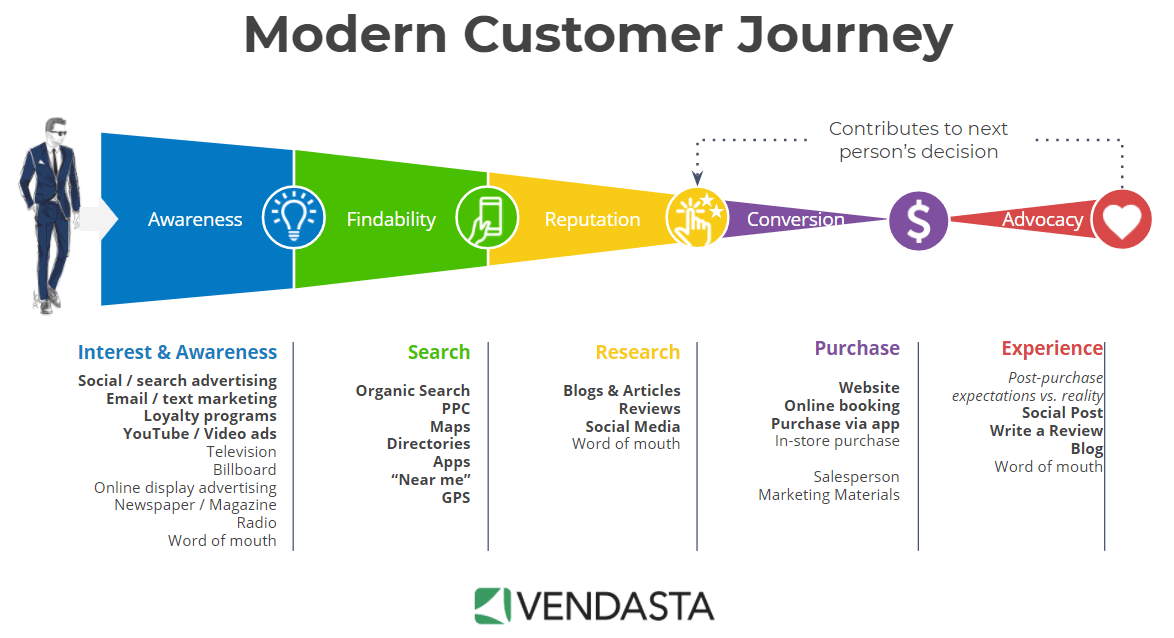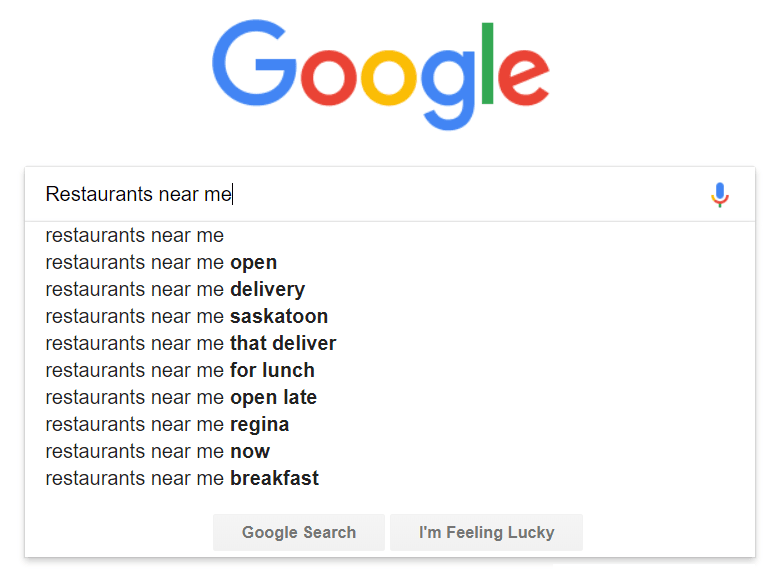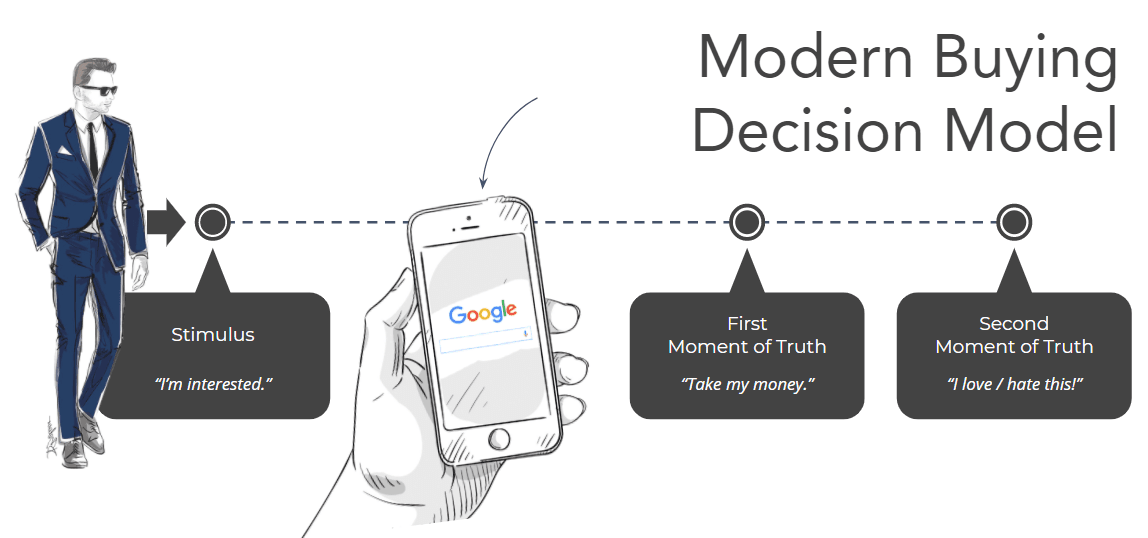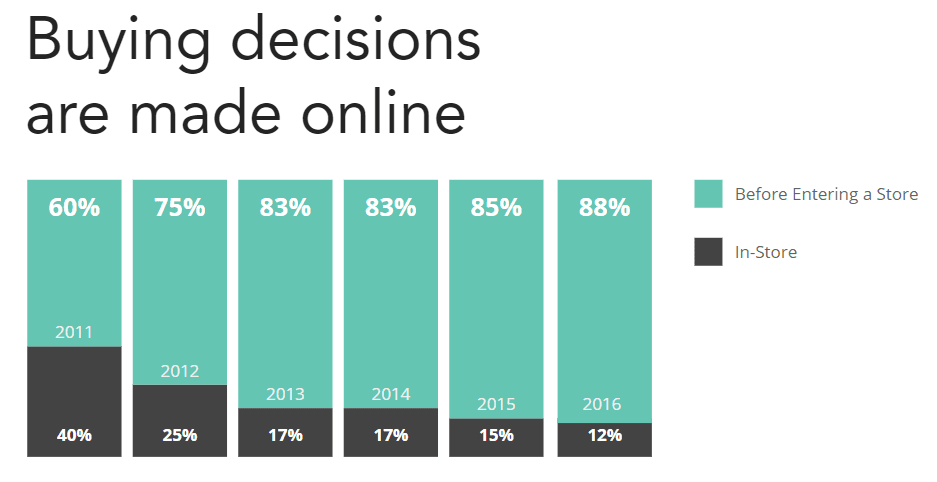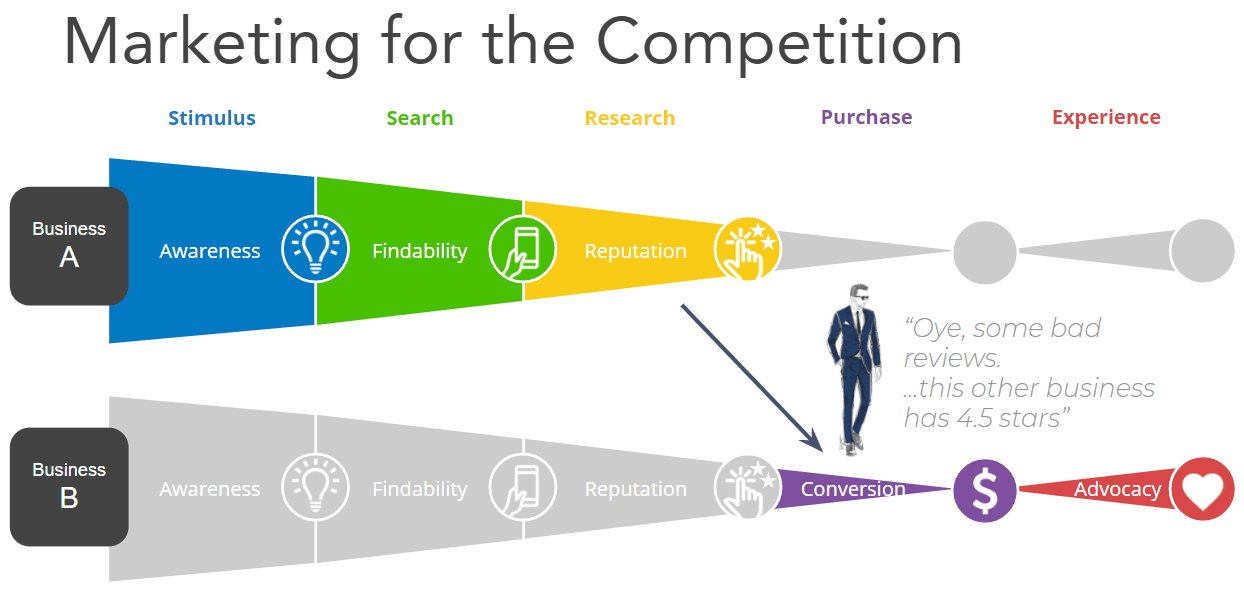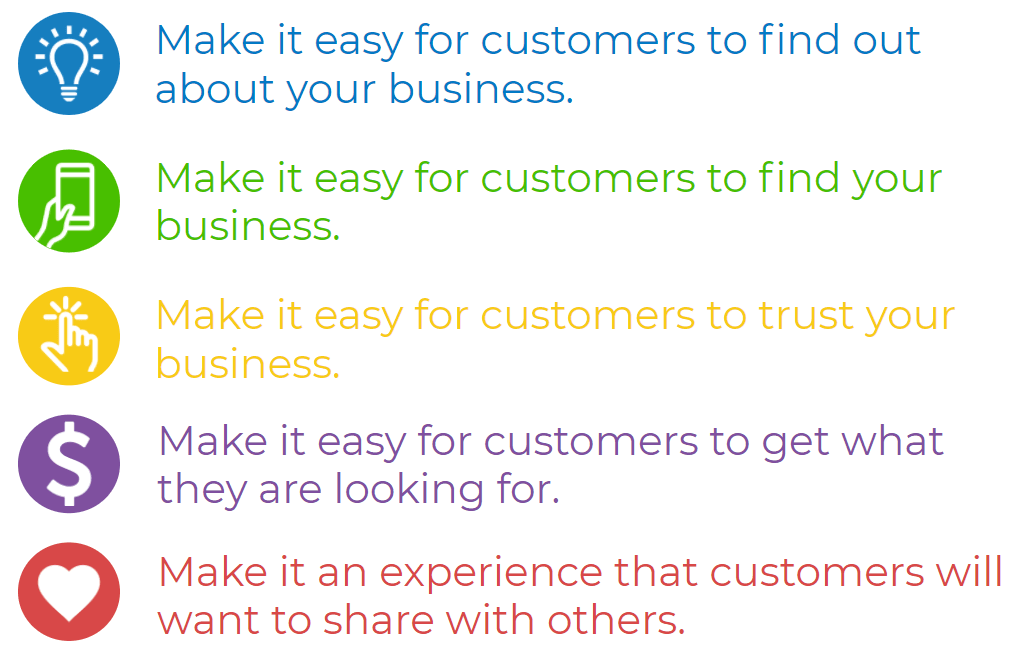The 5 phases of the modern consumer journey in needs-based selling (Updated 2022)
Customers travel through a series of steps—whether they know it or not—before they make a purchase at a local business. This is known as the consumer journey. For customers, the journey they undergo is not something they often think about, as they are just looking for an outlet to fulfill their buying needs. For local businesses, the customer journey model is the difference between a sale and a consumer buying products/services from a local competitor.
Explore the tools, tactics, and expert advice you need to improve your customer experience structures. Download “Keep Them Satisfied: The 360 Guide to Customer Success” now.
The 5 phases of the customer journey model:
- Awareness
- Findability
- Reputation
- Conversion
- Advocacy
Many people think that the consumer journey ends at the point of sale, but that is not entirely true. The customer journey moves starts at awareness and continues well after the point of purchase, and the buyer has a major influence on other consumers when sharing their customer experience.
If you’re looking to see how a local business can impact or influence a customer’s buying experience then you’re in the right place.
We look to show how a local business is involved in each step of the buyer journey and will provide action items to help your local business develop lasting customer relationships.
Brief history of marketing: raising awareness
Over time, the customer journey model has changed as customers constantly find new ways to discover local businesses through advertising and fulfill their individual buying needs. One thing that has not changed over time is the presence of a stimulating moment in the consumer journey—something that gets a consumer to think about a business.
What does customer journey model awareness mean? Essentially, awareness is some form of advertising that grabbed the consumer’s attention and has them interested in a product or service.
The different forms of brand awareness in terms of marketing or advertising have transformed drastically over the years.
1450 → print advertising (newspapers)
Johannes Gutenberg invents the printing press and opens the first-ever print shop in Germany.
1800’s → posters and billboards
Light posts and signs everywhere become littered with poster advertising. In 1867, Billboard rentals become popular and advertisers begin renting out major billboard spaces for customer journey awareness (OAAA).
1902 → radio advertising
The first paid radio ads were aired in the year 1922. Many people believe that the earliest radio commercial was the WEAF “toll broadcasting” program developed by AT&T (Voices).
1941 → TV advertising
The very first television ad appeared on July 1, 1941 during a baseball game on a local channel in New York. It was a ten-second commercial advertising Bulova watches and cost a mere four dollars (cheap customer journey awareness!) (Quality Logo Products).
1970s → introduction of the personal computer
To this day, there is still the debate as to which company or which individual created the first PC. No matter the official creator, PC technology did not surface until the late 1970s.
1980s → telemarketing takes off
Marketing via phone, or “telemarketing” as it has come to be known, began in the early 1980s. In 1981, total business expenditures for telemarketing exceeded the dollars spent on direct-mail advertising for the first time (AdAge).
1995 → search marketing
Search engines were introduced in the mid-to-late 1990’s with Yahoo paving the way for search engines to follow, such as: AltaVista, Ask.com, and yes, Google (introduced in the late 1990’s). It was not until the year 2000 that the AdWords system from Google was launched, revolutionizing search engine marketing/PPC.
2000 → content marketing (blogging)
The early 2000s were a period of growth for blogs. In 1999, according to a list compiled by Jesse James Garrett, there were 23 blogs on the internet. By the middle of 2006, there were 50 million blogs according to Technorati‘s State of the Blogosphere report (WebDesignerDepot). This was the start of what we refer to today as content marketing, or optimizing a website’s content for search engine algorithms (SEO).
2004 → social media
By 2004 the world has been introduced to major social media platforms such as: LinkedIn, MySpace, and Facebook. The emergence and rapid growth of social media continues as Twitter is launched in 2006. Today we see many of these platforms dominate the social media landscape.
Late 2000’s → email marketing
It was not until the late 2000’s that Email marketing really took off. Following Can-Spam legislation, people are hesitant to send spam type emails. As the marketing world becomes more familiar with email marketing, the development of marketing automation comes to follow.
Today → transition to digital/online advertising
- Digital advertising
Digital advertising includes a variety of internet marketing tactics including: social media advertising, online advertising, search engine advertising, etc.
Local businesses are spending more and more of their marketing budget on paid digital advertising. This includes Google AdWords, Google Display, and Facebook Ads Manager to be specific. These platforms allow for advanced targeting as well as proof of performance metrics that offer local businesses a chance to see actionable ROI. Digital advertising has become so advanced that local businesses can be confident their message is displayed in front of relevant audiences.
Today, digital marketing is one of the strongest stimuli in regards to the first step in the customer journey model. Digital marketing budgets seem to increase substantially year-by-year, and as major platforms like Google and Facebook continue to innovate, more businesses will adopt digital marketing in their marketing stack.
How has the customer journey model changed over time?
The big difference between the old customer journey model and the new consumer journey involves one thing...search engines.
With Google and other search engines, it has never been easier or more convenient for consumers to get exactly what they want when they want it. Most of the consumer journey now takes place at the fingertips of the consumer either on their mobile phone or their computer.
As mentioned above, a major portion of the customer journey model involves researching a business online before a purchasing decision is made. How are consumers doing this? With the easiest and most used tool in the world for providing answers, Google. The best way for sales professionals to address the new buying decision model is to approach it with needs-based selling.
Traditionally, before Google ever existed, marketing looked something like this. First, a customer would be attracted to a business or brand through an advertisement. Second, the customer would experience their “first moment of truth” as they made a purchase at the business. Lastly, depending on the customer experience, the customer would share their thoughts via word of mouth. This is a transactional experience for the customer but with needs-based selling on the side of a sales team the purchasing experience can be elevated.
When looking at both models, we notice that for the most part, they are largely the same - a consumer becomes aware of a product/service, gathers information, and eventually decides to buy or not buy based off of the information.
What has changed in the model is the way that consumers gather information as part of the consumer journey. With Google, the access to information has never been easier, and a customer’s ability to compare products, companies, or services allows customers to have greater purchasing power.
Google refers to the search and research aspect of the customer lifecycle as the “Zero Moment of Truth” or ZMOT. Google first introduced this ideology in 2011, and with this new thinking came a lot of juicy data.
- 88% of U.S. consumers now engage in the "zero moment of truth" prior to making their final decision (Google 2016 ZMOT Stats).
- Consumers consulted an average of 10.4 new media or traditional sources before purchasing, 2x the sources consulted just the year before (Google).
Every local business should concern themselves with their company’s online presence, it has proven to be very important to consumers worldwide. Have a look at the video below, it will help in further describing what the ZMOT is and how it impacts the consumer journey.
A local business needs to be found online! Why? Because part of the consumer journey involves searching for businesses and looking for websites, location, or for details on products and services that fulfill a customer’s need.
The businesses who win in today’s marketing world are the ones who are most findable. When a customer is looking for a product or service, they might search on google for “haircuts.” This customer is looking for relevant organic search results or paid advertising that stands out to them and addresses their need for a haircut.
After conducting a search, the next step might be to look for hairstylists who are close to the customer’s house or workplace. When looking for the direct location of a business a customer is going to look at one thing that will tell them how to get in touch with the business either in person or over the phone, a business listing.
- Online listings
A local business needs to be listed online if they expect people to find where their physical location exists. Listings point consumers in the right direction, eventually leading them to an in-store visit at a local business.
So a customer has searched for a hairstylist online, but they want to find out MORE about the business before they spend their money. Customers do not show up to the first business they see anymore, they spend time researching the establishment beforehand.
If a customer happens to read a lot of negativity about a business, it is likely they will continue searching for a business until they find a place they are wanting to do business with. Local establishments must be aware of the impact that online conversation has on the performance of their business and the influence that online discussion has on customer journey awareness.
Two of the most common research outlets are:
- Online reviews
Consumers look for online reviews of a local business before a transaction is ever made. If other consumers are posting positive reviews about a local business, it is more likely that other consumers will visit. - Social media
A consistent presence and activity on social media show consumers that a local business cares about customer service and consumer interaction.
If a customer reads that a hairstylist used the wrong hair dye or accidentally shaved the side of someone’s head they are likely to take their business elsewhere. In fact, 86% of people will hesitate to purchase from a business that has negative online reviews.
If a business is active on social media, replying to online conversation, and has a glowing 4- or 5-star rating on online review sites they are likely to win the business of customers searching for their products/services.
If a customer has searched for a local business and done their research on the business, it is likely that they are ready to make a purchasing decision. Many businesses have moved their services to their website, including ecommerce options that allow online purchasing.
- Website presence
A website acts as the virtual doorway for consumers to visit a local business. Without one, a local business isn’t seen by people searching for their products/services. We are seeing more and more businesses offering an online storefront to accommodate online shoppers’ needs.
As more customers adopt the online shopping lifestyle, the presence of websites and ecommerce options becomes more significant. If a customer prefers to shop in store, a website may list different brands or products that a customer can expect to see in the store.
Note: It is still extremely important for local businesses to have websites even if they choose to sell their products and services in store as opposed to online.
When a local business converts a web search into a paying customer the customer then has the opportunity to influence the consumer journey for other consumers. If the customer had an extremely negative purchasing experience they are extremely likely to share their experience with others.

Reviews like this can affect the profitability of a local business if they are not dealt with correctly or addressed in an appropriate manner. Businesses must be careful that they are not piling up too many of these types of negative reviews. If so it is likely that consumers will take their business elsewhere and it is more likely that they take their business to one of the local competitors. By offering online review management services, you can build a new revenue stream and help clients improve their online reputations.

Obviously, this client had an amazing experience with their hairstylist, and they shared it with the world to see. These types of online reviews can influence other customers to do business with a local establishment. Offering a great customer experience is a business's’ greatest asset and the best source of free marketing.
This is where the Reputation phase and the Advocacy phase of the customer lifecycle tie together. One person's experience has the potential to affect the experience of many other consumers. If a customer is browsing reviews of a local business they must be nearing a readiness to make a purchase. This customer was ready to buy until they saw a few negative reviews; now they no longer trust this local business. The next step for this consumer is to find a local business who won't let them down, so they forget about Business A and convert the sale at Business B. This is what we call 'marketing for your competition' and businesses cannot afford to throw away a potential sale to a competing business!
If your business is piling up negative reviews, don’t panic! We’ve got you covered with our easy-guide all about how to respond to positive and negative online reviews.
Needs-based selling in the consumer journey
Consultative or needs-based selling approaches sales with a very customer-centric mindset. The consumer journey is top of mind in needs-based selling. The sales person has to dig into some customer research to determine each individual customer’s needs and pain points. This gives the sales person the information they need to position their products and services in a way that appeals to the customer.
Much more involved than transactional selling, needs-based selling using the consumer journey is a great approach to building customer relationships. By approaching the customer with knowledge about their company, their needs, and how your product solves their pain you’ve already thrown open the proverbial door. Even if it’s not the right time for that customer to purchase the product or service being offered, that relationship already exists. Sales professionals can use these relationships to stay top of mind for those potential customers.
Professionals that use needs-based selling have the agility to shift as the customer travels along the customer journey model. Because of the strong client relationship it will be easier to offer opportunities as the customer moves along the consumer journey. An ongoing conversation allows these opportunities to present themselves so that sales can be expanded.
The customized solution customers get from needs-based selling connects them to that sales professional, product, service, and company. It allows you to win ideal clients and ultimately close more deals.
Solution: a presence at every step in the customer journey model
Well, to be sure that a local business is involved at each step in the customer journey model they must be present in a variety of areas in terms of marketing and web presence. At Vendasta, we like to refer to the essential components of a local business’s marketing efforts as a local marketing stack.
What is a local marketing stack? A group of technologies that a business can use in order to enhance their marketing efforts. These technologies are grouped together to fulfill a specific set of needs for a local business. For example, a local business may say "All I care about is getting more customers in the door." Well, there's a variety of products and services that can increase traffic to a business.
So, when stacking products and services for local businesses what do we look at?
Advertising services: Do potential customers know about you?
Customer journey awareness is influenced by a local business’s ability to effectively advertise. Advertising can include everything from traditional to digital. Once a consumer knows about a local business, it is more likely that they will look for more information about the business.
Listings: Can customers find you?
A customer just heard your radio ad, saw your Facebook advertisement, or noticed your billboard advertisement and they are interested in buying something from your business. A customer will search for your business online looking for a store location, hours of operation, or a phone number to call to get in touch.
Reputation services: Do customers trust you?
Online reviews are a great way for customers to understand whether or not a business offers good customer service. Nobody wants to spend their money at a shady business, and customers will look to see if a local business is positively received by other consumers.
Social media marketing: Do customers like you?
Your great-aunt may absolutely love shopping for hand soap at a local shop, and she isn’t shy about sharing her admiration of the local business to her entire Facebook friends list! Local businesses must be sure that they not only acknowledge social media activity but utilize online conversation to frame their brand positively.
Website services: Will customers convert into sales?
If a customer has made it to the point of a potential sale in the consumer journey then it is time to close the deal. Having a website provides a means of purchasing for businesses with online stores, offering a seamless transaction. A web presence can also direct potential customers to purchase in store.
CRM/loyalty: Will they remain loyal?
Loyal customers are the customers who spend the most and visit the most frequently to a local business. The ability to retain customer support is something that every local business should work towards.
Local businesses work hard to acquire sales and to retain customers, and they must be sure that they are taking proactive measures to offer the best customer experience possible. Offering the best customer experience involves each and every single portion of the local marketing stack.
So, when stacking products and services for local businesses what do we look at?


